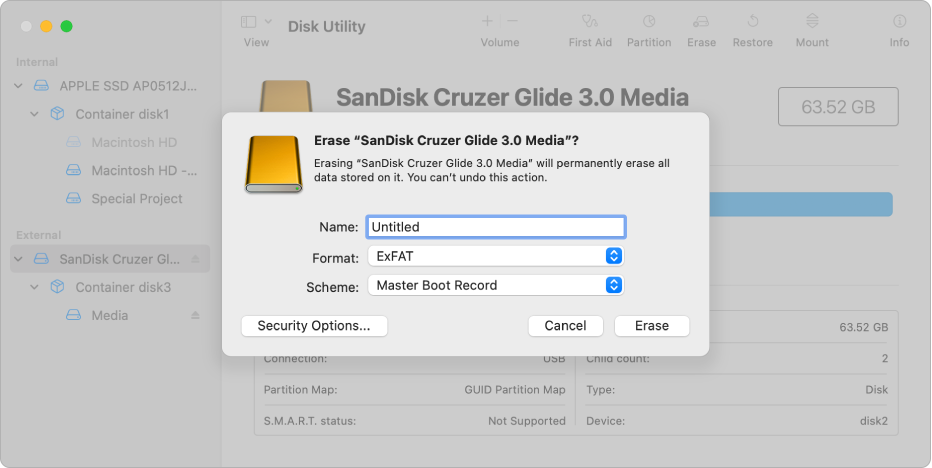

This is typical and not an issue when using the drive as NTFS. It is shown as Microsoft Reserved in Disk Utility. This volume exists because the drive is set up for Windows using GUID/ NTFS. What is that 134.2 MB volume on the drive? Which is why selecting the non-indented entry is important when formatting the drive. This is important because when erasing the drive you will get different options depending on whether you have the volume or disk selected. The indented entries directly below are the volumes (partitions). The non-indented entry is the physical disk which typically has Media in the name. You should see at least two, sometimes three, entries for your drive depending on how it is formatted. If you are running 10.12 or 10.11 this step is not required as the option is not available. Change the view to Show All Devices instead of the default which is Show Only Volumes. If you are running macOS 10.13 (High Sierra) or later it is important to change the view in Disk Utility. Note: Reformatting the drive will erase all data on the drive, so you should copy any data you want off the drive prior to formatting. Not sure what version you are using? Click here to determine your version of macOS. This article applies to the following versions of macOS: The following is not an exhaustive list of error messages, so you may not find your specific error here. Not every question will be answered, we don’t reply to email, and we cannot provide direct troubleshooting advice.This article covers some of the common error messages and questions you might encounter while using Disk Utility.

If not, we’re always looking for new problems to solve! Email yours to including screen captures as appropriate, and whether you want your full name used.

We’ve compiled a list of the questions we get asked most frequently along with answers and links to columns: read our super FAQ to see if your question is covered. This Mac 911 article is in response to a question submitted by Macworld reader Joe. The Scheme only appears in Disk Utility (highlighting in red added) when you opt to show all devices. Now, you can select a drive, click Erase, and view the Scheme options for the drive as well as the default format type applied when the drive has completed applying the new scheme. From the View menu in the upper-left corner, select Show All Devices, and you will see the hierarchy of drive > volume (most formats) or drive > container > volume (APFS).


 0 kommentar(er)
0 kommentar(er)
